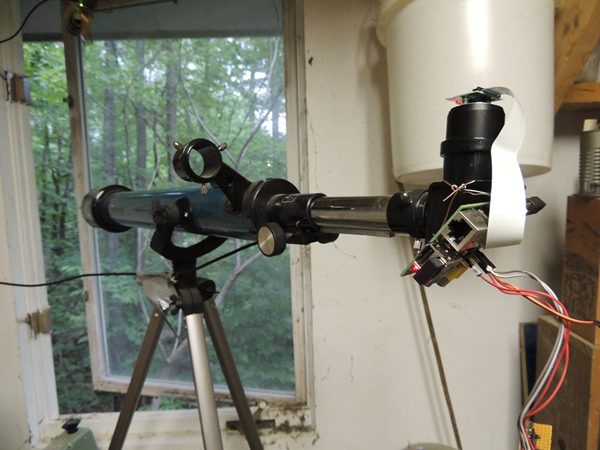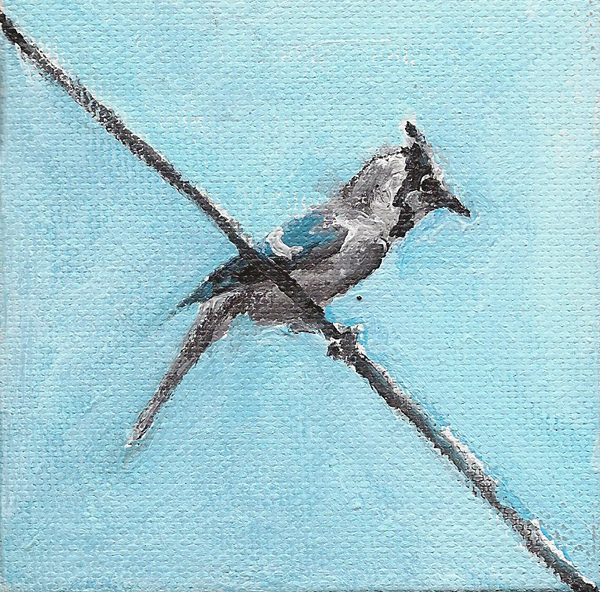|
|
|
telescope-based surveillance camera
Tuesday, June 4 2019
I left for work early again this morning, and, at this time of year, there's a stretch of US 209 northbound where the highway is about to go four-lane where the rising sun can get in your eyes. I was partially blinded this way when a male deer ran out across the highway in front of me. I slammed on my brakes and probably didn't come all that close to hitting him. I was probably in more danger from the car that was following me at the time. The deer continued off to the west. I noticed his antlers were still covered with velvet and had no more than two points each.
I still had a trace of whatever illness I thought I had back on Sunday, though it was mostly behind me. Somehow I'd avoided coming down with an illness that had much effect on my productivity. Nevertheless, I decided to try some semi-recreational pseudoephedrine, which would dry out what little was still wrong in my sinuses and perhaps give me a good workplace jolt as well. In the past my recreational doses ranged from 120 to 150 milligrams, but this time I just took a modest 90 milligrams. I hadn't taken pseudoephedrine in over a year and had forgotten that (for me at least) it's a pretty good drug. It doesn't quite provide the euphoric buzz of, say, any form of adderall. But it definitely makes my brain work better. It also helps with tedious debugging and exploratory tasks of the sort I'm having to do now that I've taken on another software development project.
My project this evening after getting home from work was to build another telephoto-lens-enabled Raspberry-Pi-based surveillance camera. I wanted stronger magnification than the little 12X smartphone zoom lens could provide, and I was pretty sure a cheap astronomical telescope (a Tasco-made device I'd bought cheap at the Tibetan Center thrift store) would work. I was out of Raspberry Pi Zeroes, but I had an old Raspberry Pi Model One, from back before they had more than 26 pins. This is the same model as I used for the EyeSpy surveillance robot I'd put in the living room, so all I had to do was use a clone of its SD card to have most of the necessary software in place. As for attaching the camera to the telescope's eyepiece, I decided the best way to make such a temporary connection was to use rare earth magnets. I superglued a steel washer to the eyepiece so that its hole matched the eyepiece lens and then superglued two rare earth magnets to the tiny Raspberry Pi camera board. This made it possible to secure the lens solidly on the eyepiece while still being able to scoot it into the optimal position. There's no easy way to adjust the Z-index with this method, though additional magnets could be stacked up on the camera's magnets to make large adjustments.
I had this new high-magnification surveillance camera working surprisingly quickly. When pointed out the garage window at the woodpecker nest, I found the frame of the videofeed fell entirely within the hole in the tree, which was perhaps too much magnification. After doing the setup and getting it all working, there was only a little bit of daylight left, and the woodpeckers never appeared during it. The cheap astronomical telescope would need a lot of light to produce a good image.

My telescope-based surveillance camera, with Raspberry Pi.
After taking large amounts of pseudoephedrine, it's hard (though not impossible) to wind down without alcohol. I'd taken that pseudoephedrine at around 2:00pm and it was still going strong at 7:30pm. So I bought myself the right to drink some booze by painting a small painting of a blue jay. See for yourself.

A painting of a blue jay.
For linking purposes this article's URL is:
http://asecular.com/blog.php?190604 feedback
previous | next |

